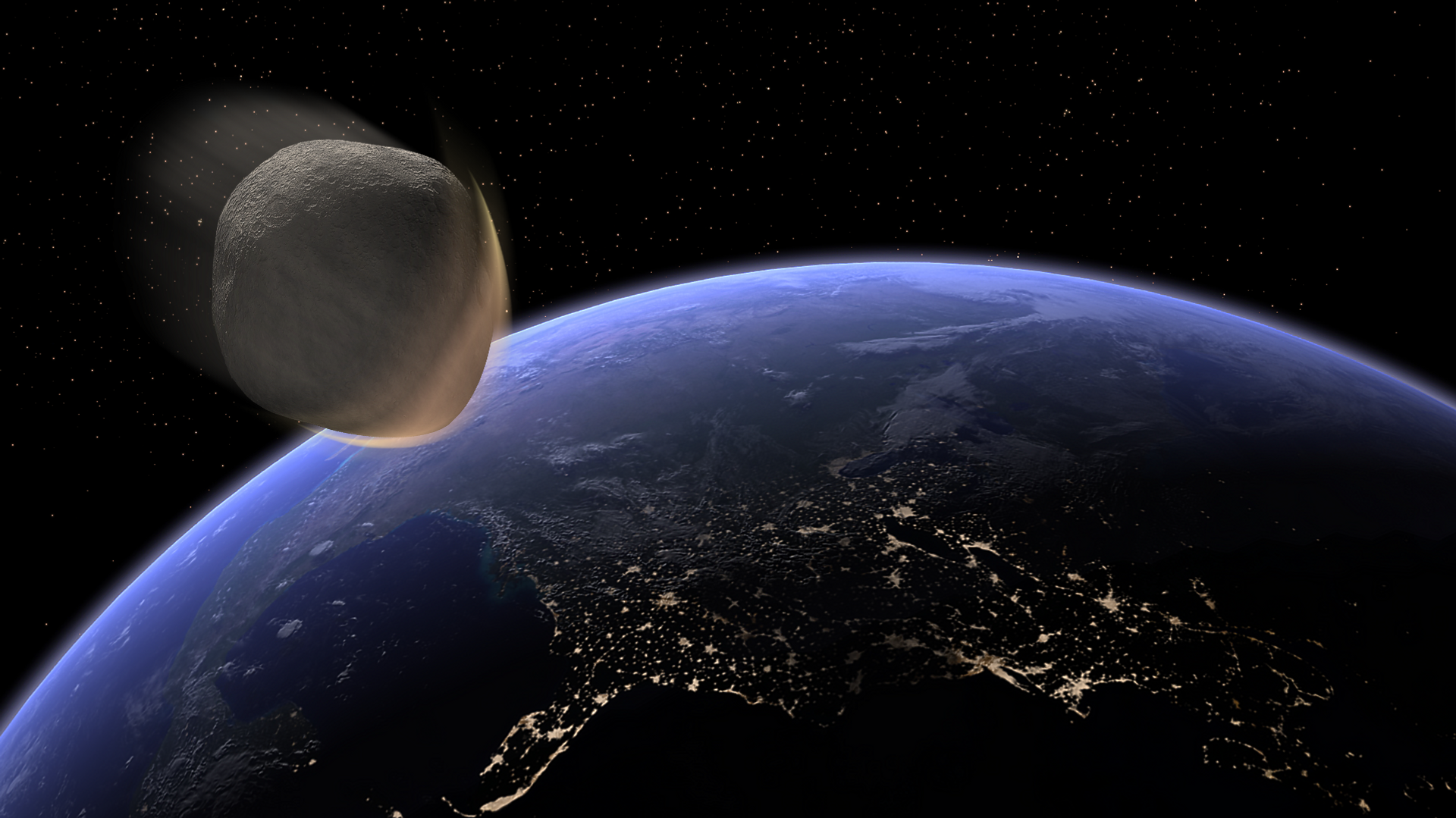Italian astronomer Claudio Maccone believes the best way to protect our planet from potential killer asteroids is to launch an offensive, namely fire missiles at them directly from space, and more specifically, from one particular spot. The synopsis of his research, including his latest measurements on the proposed plan, was uploaded to the Arxiv preprint server earlier this week.
Maccone, who is also a mathematician apart from his astronomic expertise, first arrived at the idea back in 2002, explaining how missiles stationed at in-space Lagrange points, spots where the gravity of Earth and the Moon neutralises each other, enabling spacecraft to remain more or less stationary -could be used to deflect asteroids.
Now he has updated his estimates, further elaborating on the concept for it to include the opportunity of blasting strings of missiles to ensure that threatening space rocks are entirely eliminated.
"A sufficient number of missiles could thus be launched in a sequence from the Earth-Moon Lagrangian points L1 and L3 with the result that the SUM of all these small and repeated deflections will finally throw the NEO [Near-Earth Object] off its collision hyperbola with the Earth", Maccone writes.
Maccone recently applied for a patent for the software that would enable to make programme models of such sophisticated space-fired missile deflections, but he acknowledges that the project is still in its early stage.
"Many engineering details about the missiles shot from L1 and L3, however, still have to be implemented into our simulations, partly because they are classified", the scientist commented.
According to NASA's classification, the notion of a Near-Earth Object (NEO) refers to any space rock, be it a comet or asteroid, that whizzes past our planet within 1.3 astronomical units (AU). One AU is the average distance between Earth and the Sun.
Another synonymous, but narrower term no less frequently used is "potentially hazardous asteroid", or PHA. According to NASA, PHAs are currently determined based on the asteroid's measured potential to make a dangerously close fly-by. In particular, all asteroids with a minimum orbit intersection distance (MOID) of 0.05 AU or less and an absolute magnitude (H) of 22.0 or less fall under the category of PHAs.
As per NEOWISE data, there are 4,700 ± 1,500 potentially hazardous asteroids in space with a diameter greater than 100 metres.
Although the issue has never ceased to attract numerous biblical end-of-the-world speculations, Earth hasn't seen an asteroid of apocalyptic scale since the space rock that purportedly wiped the dinosaurs off the planet 66 million years ago.
Most tracked asteroids don't come into direct contact with Earth's atmosphere, but in rare cases the giant space bodies coming into at least some proximity to Earth tend to impact the accuracy of weather systems.




